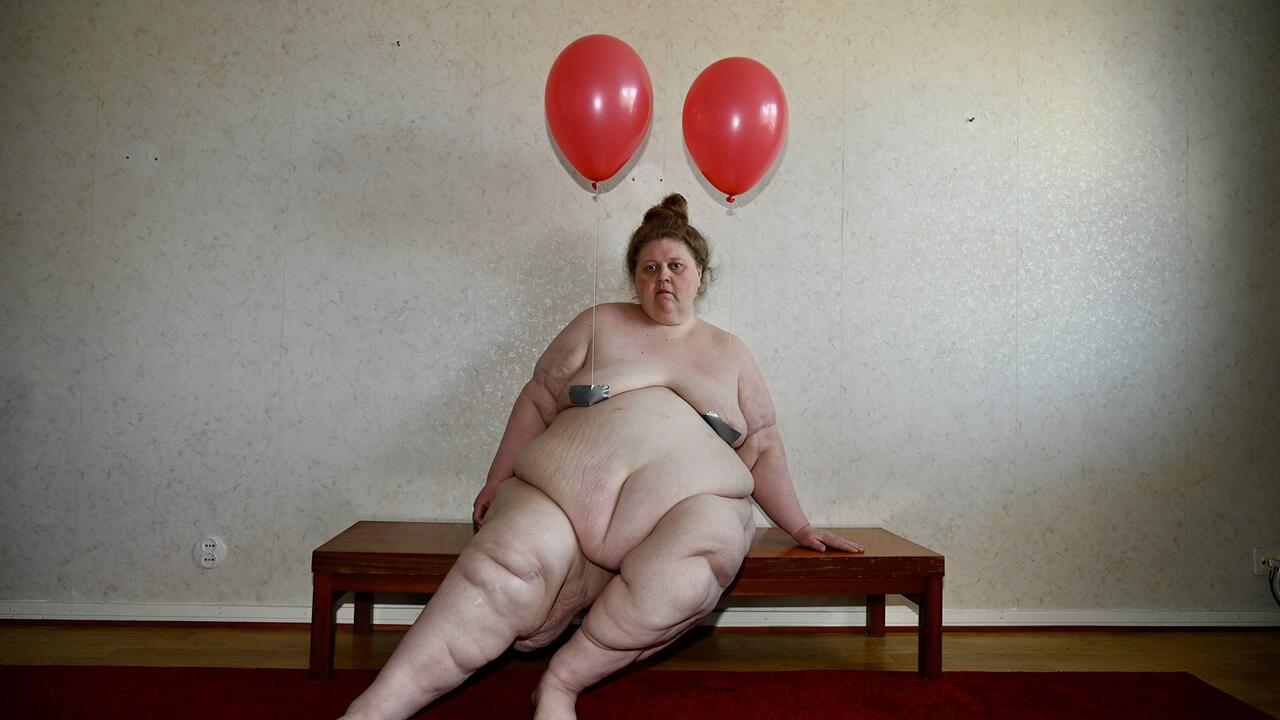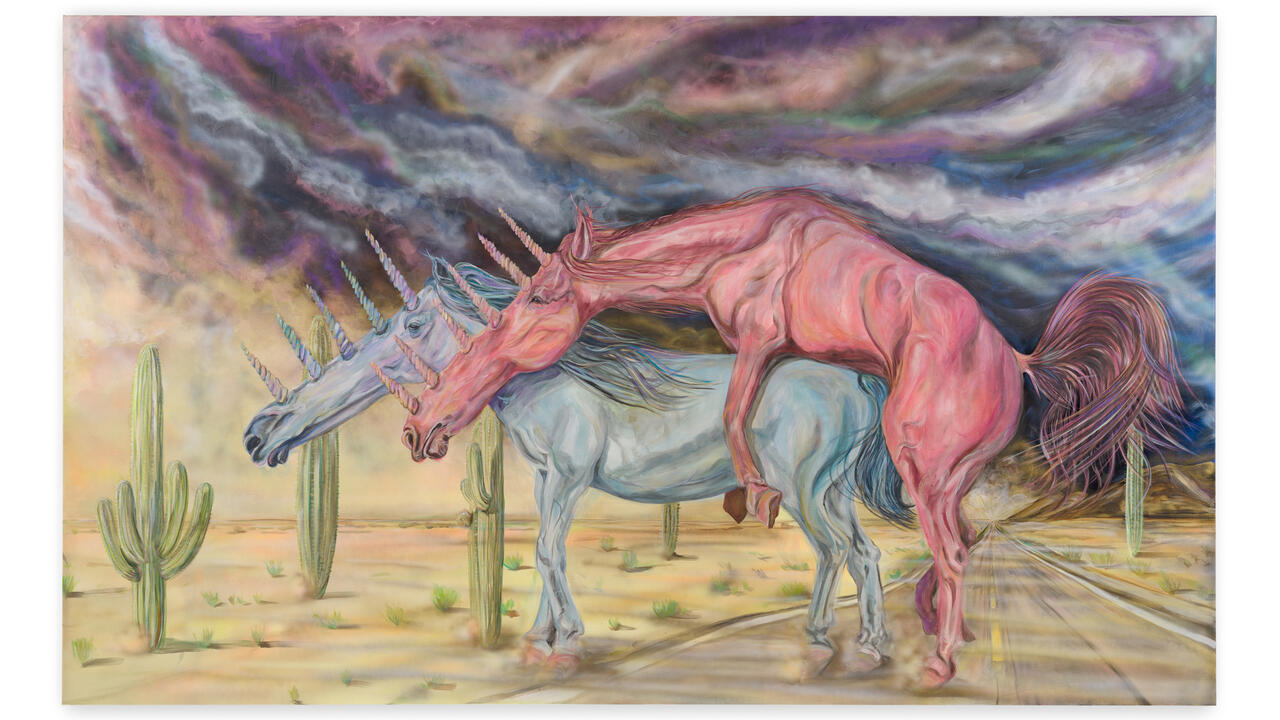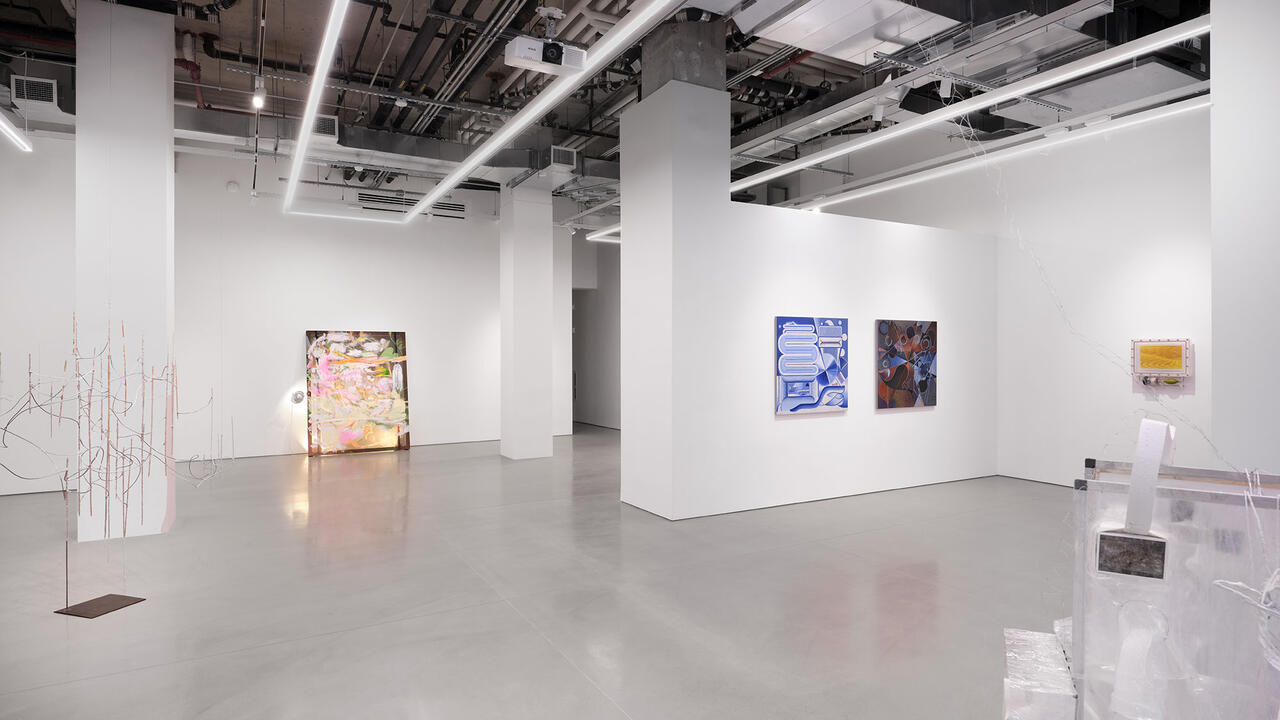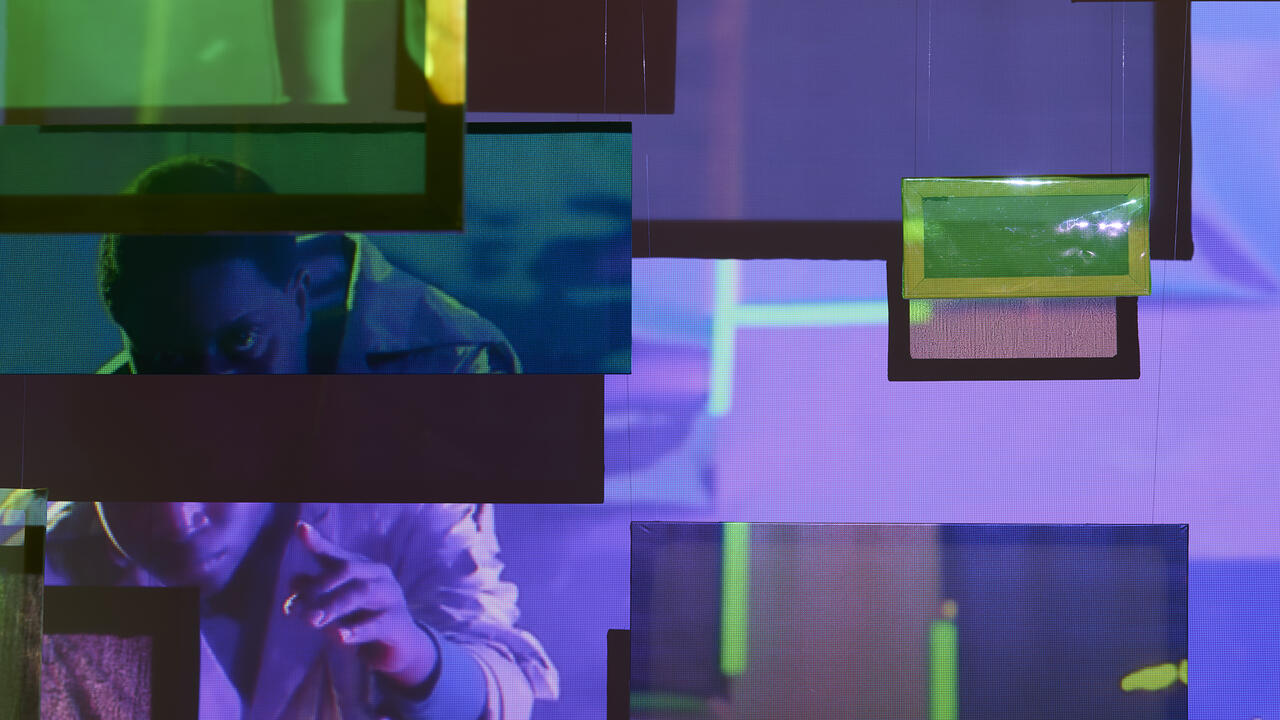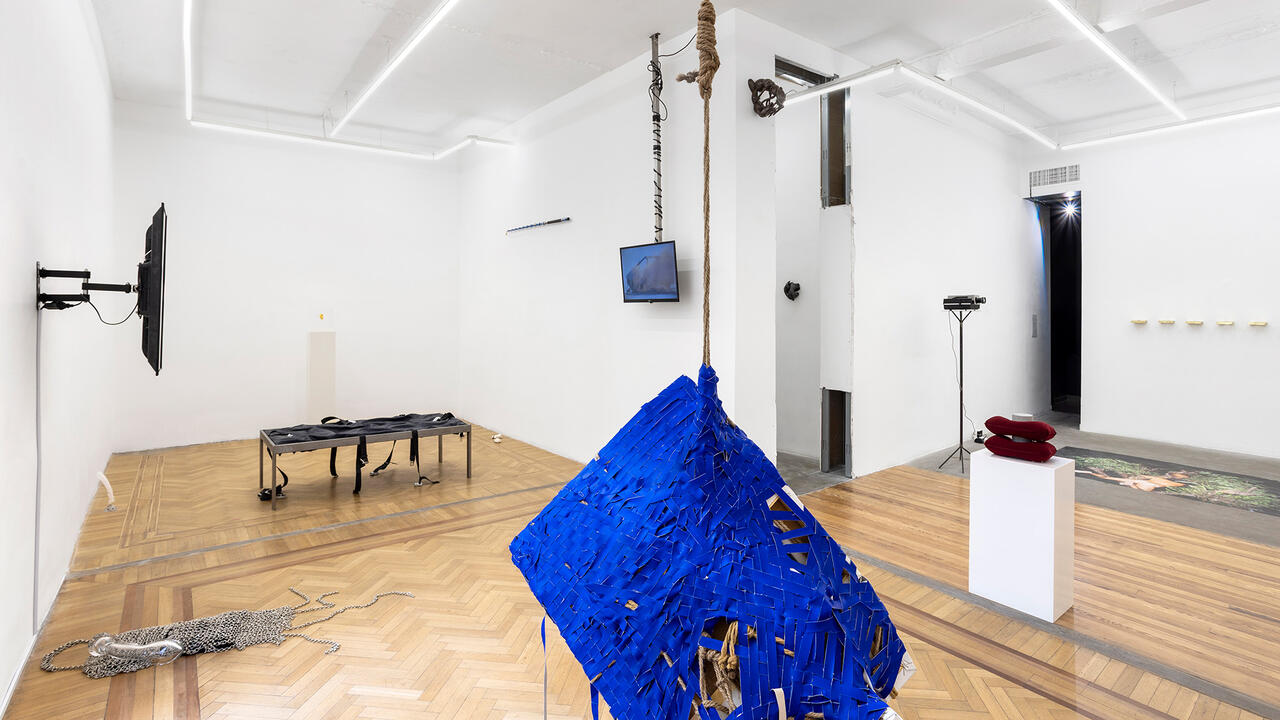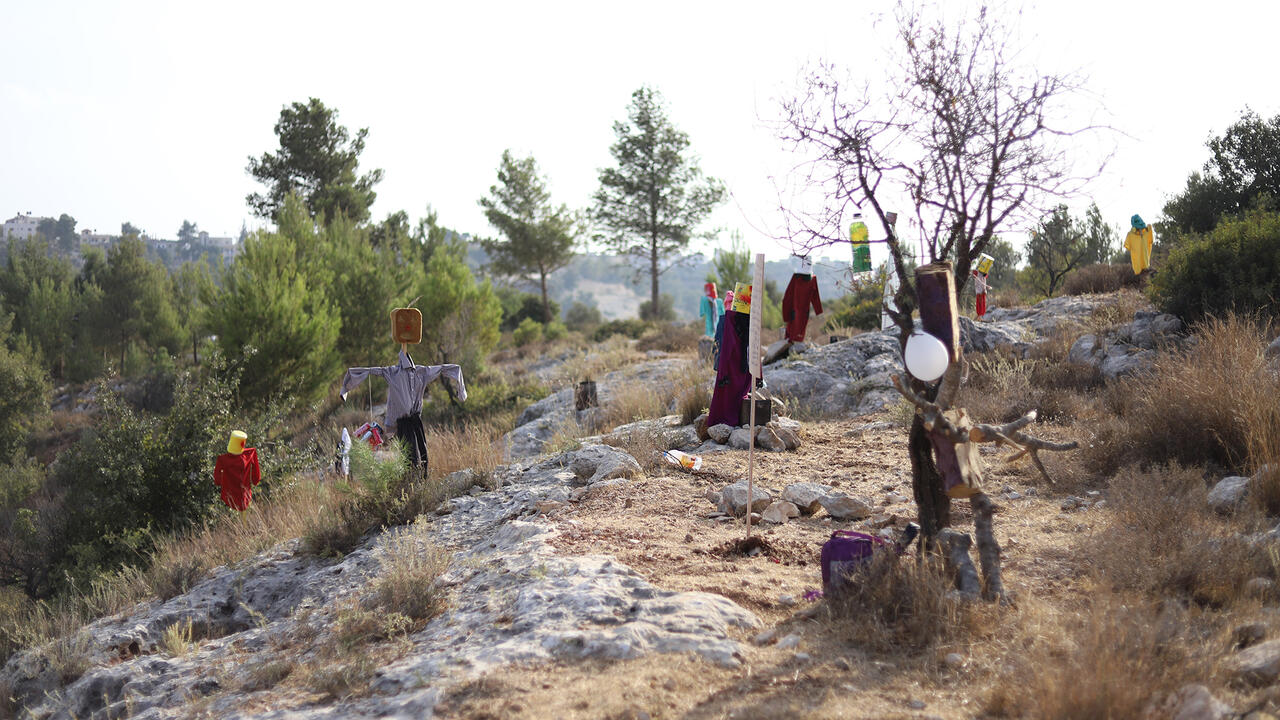Liliana Porter: Reality, Representation and Problematizing Scale
Currently the subject of a retrospective at El Museo del Barrio in New York, the Buenos Aires-born artist plays with size – and expectation – to probe the ‘other situations’ of modern life
Currently the subject of a retrospective at El Museo del Barrio in New York, the Buenos Aires-born artist plays with size – and expectation – to probe the ‘other situations’ of modern life

Lewis Carroll’s Alice’s Adventures in Wonderland (1865) is a great book of scale. Its protagonist, Alice, shrinks or grows when she drinks a potion or eats a confection, changing her relationship to objects and spaces. One day, when she is bored, a pink-eyed rabbit dressed elegantly in white children’s gloves runs past her, pocket watch in hand, announcing he’s going to be late. She follows this strange character down a tunnel that ends at a corridor full of doors that don’t open. She finds a glass table with a little key on it and a potion labelled ‘DRINK ME’ in large, handsome letters. She drinks half the potion and shrinks, forgetting to grab the key, which now sits atop an outsized table. She tries to climb its glass legs but slips back down to the ground, where she devours a miniscule confection with the words ‘EAT ME’ spelled out on it in currants. She grows to enormous proportions and begins to cry. Her gigantic, heavy tears fall by the gallon and form a vast pool until she drinks the rest of the potion and shrinks again to find herself swimming in a sea of her own tears.
For the ancient Greeks, measurements were derived from the dimensions of the body: from the foot to the league, the pace to the cubit. Over time, this idea has grown, shrunk and grown again to extravagant proportions. On the one hand, there is Immanuel Kant’s idea of the sublime as something so immense that it overwhelms us; at the other extreme are the smallest characters in fiction. For example, Brazilian-Ukrainian novelist Clarice Lispector’s character Little Flower (who is pregnant, to boot) from the marvellous short story ‘The Smallest Woman in the World’ (1960) is photographed by a journalist in the Congo and fits, life-sized, on the front page of the newspaper. Little Flower is 46 cm tall; when Alice shrinks, she measures 20 cm. Perhaps the smallest character of all is the Brothers Grimm’s Tom Thumb, an only child who was born the size of a thumb (around 8 cm) and never grew any taller. Tom navigates a series of adventures in a world that is far too big for him. The story ends with his parents slicing open the belly of a wolf to save their miniscule child. Maybe it would be fair to say that both extremes – the very small (like Little Flower’s baby) and the very large (like whatever god made Little Flower’s pregnancy possible) – overwhelm us: they escape our gaze, but not our imagination.

The work of Buenos Aires-born, New York-based artist Liliana Porter problematizes scale. Toys (already a scale version of reality) first appeared in Porter’s work in the 1970s. She began the ongoing series ‘Trabajo forzado’ (Forced Labour) in the 1990s with a sculpture of a miniature man shovelling a pile of dirt that, compared to him, appears huge – perhaps as a critique of the symbolism of Latin American manual labour in the US. A regular feature of this series is the miniature scale of the human figures – each of them smaller than the smallest Tom Thumb – in a large-scale world where labour takes on epic dimensions and, unlike the Brothers Grimm story, there’s no one to save them. There are, among other figures, a tiny man chipping away at a minute section of a huge wall (Forced Labour [Man with Hammer], 2006), one woman sweeping a gigantic pile of blue sand (Forced Labour [Blue Sand], 2008) and another sewing an enormous pink textile (Tejedora, Knitter, 2017). Unlike Tom Thumb, Alice or Little Flower, Porter’s characters do not play a part in a story; they are the subjects in simple sentences where the verb (their work) further stresses their infinitesimal stature in relation to the enormous task they face, condemned as they are to remain caught in a continuous present. These labours, scaled up to match our own, might be equivalent to sweeping the surface of a whole city or weaving a blanket the size of a nation, but always in the present progressive, without respite or any end in sight: I am sweeping; we are sewing. Gender stereotypes push this relationship between labour and size even further: the women weave; the men demolish, paint walls, use tools. Moreover, Porter’s toy workers are not made from durable materials, like lead or iron, but from plastic; in other words, they are not permanent subjects and, in their continuous present, they are condemned to gender stereotypes, forced labour and imminent disappearance. The figures have no distinguishing features, they are just barely silhouettes; this tells us that, in addition to everything else, they are also replaceable.
In a brilliant 2013 conversation with Inés Katzenstein about being a Latin American woman artist in New York, Porter tells us: ‘I became aware of the discrimination and the difference in salaries, opportunities and the roles that had been established, and that the proportion of men and women being represented in exhibitions and galleries was abysmally unequal.’ Moreover, being from Latin America, she is sometimes spoken to in louder, slower, condescending voices. Why does the career of a female artist from Latin America have to exist on a smaller scale than that of a white man born in the US? Why does a woman pursuing her art need to be like the tiny Alice, slipping as she tries to climb the legs of a glass table to reach for a key?
I also wonder how this relation of scales looks in literature. Perhaps the glass table, that apex of stature, is the all-encompassing male grand narrative, like the writing of Ernest Hemingway or Octavio Paz (oops! Black Jack of Nobel Prize winners). Could it be that Gabriel García Márquez’s One Hundred Years of Solitude (1967) is the measure of the great epic novel? Or that US novelist Jonathan Franzen is a good contemporary yardstick? What about our tiny lives? And what happens if, gasp, we women – the other half of the population – are fully recognized as writers, filmmakers, musicians and artists? Is the difference in scale also the difference in power? The biggest, the most visible, sold, liked, retweeted – is he the one with power? Porter’s career and works have something to say about this.

Porter was born in Buenos Aires and has lived in New York since 1964. She moved from Argentina to Mexico City when she was 16 and, by 17, had had her first exhibition at Proteo gallery. Newspaper articles were written about her and, for the first time, she felt like an artist. When she was 22, a printmaking instructor from Mexico advised her to broaden her horizons by seeing the museums of Europe. A friend of hers was living in New York at the time and he asked her to visit him before she left for Europe; the city left such an impression on her that she decided to stay. On her fourth day in New York, she enrolled in a printmaking class at the Pratt Institute in Brooklyn, where she met Luis Camnitzer. The two were married the following year. They bought their first house on Long Island with the help of a watercolour given to them by Salvador Dalí. Porter discovered pop art and minimalism and found them stimulating; she was fascinated by Roy Lichtenstein, Claes Oldenburg, Dieter Roth, Andy Warhol and the arte povera movement. Later, she married Alan Wiener, and they were together for 12 years. In 1990, she met the Uruguayan artist Ana Tiscornia when both were invited to Cuba to judge a prize. The two have remained a couple to this day; they frequently collaborate, sharing a heteronym, Alicia Mihai Gazcue.
Porter’s work combines different media, such as printmaking, painting, drawing, photography, installation, video, public art and theatre. From the very beginning, one of the themes that has appeared throughout her work is the relationship between reality and representation – for example, in Stitch (1970), in which a real length of thread is joined to the depiction of one. It’s a seemingly simple piece that nonetheless expresses the DNA of Porter’s work: a vertical line in itself is just a line, just like a piece of thread is simply thread, but put together they form the idea of a stitch – half representation, half real – that expands the frame of the photograph to include the gallery walls. Porter repeated this poetic method several times. In ‘The Square/El cuadrado’ (1973), a series of six gelatin silver prints, she drew a square onto her own hand, fitting it in her palm. In Untitled (Triangle) (1973), three photographs of the artist’s hands are linked by a graphite triangle drawn directly on the wall. More recently, in The Gardener (2012), Porter placed a bronze figurine on shattered china so that it appears to be watering the decorative flower painted on a fragment.
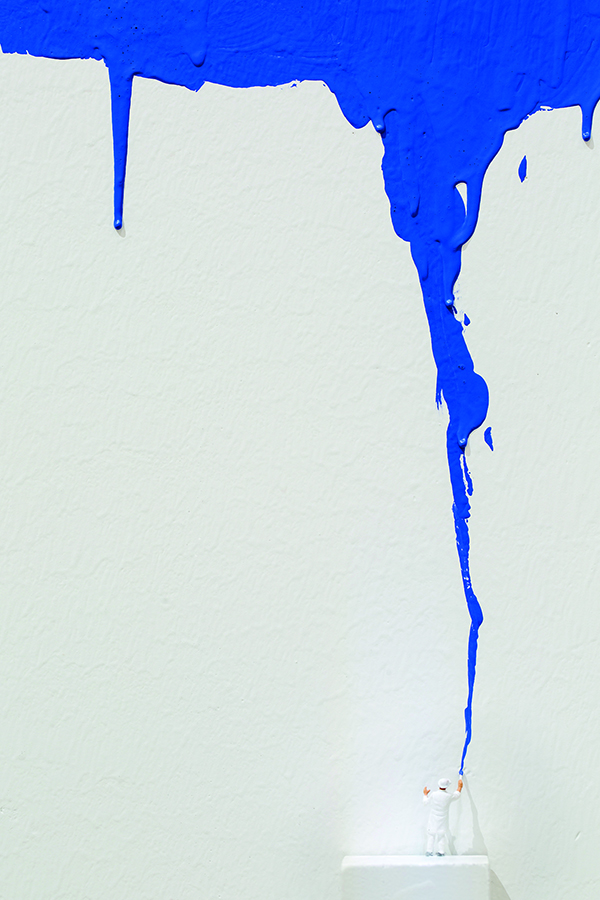
‘Other Situations’ – a retrospective of Porter’s work curated by Humberto Moro – opened last month at El Museo del Barrio in New York, following an initial run at Savannah College of Art and Design last year. The show includes five decades of work, grouped according to four lines that thread through the artist’s oeuvre: photographs from the 1970s through to the present day, among which appears the first Arruga (Wrinkle, 1968) – images documenting a sheet of paper crumpled, bit by bit, until it is completely balled up – as well as her first black and white photographs (most of which are of hands); found objects of mass consumption that reference an historical figure and are shown out of context, like a chocolate cross (Sugar Food/Christ, 2006) and a mouse pad stamped with the image of Che Guevara (Mouse Pad Artwork, 2004); miniature sculptures from ‘Trabajo forzado’; gadgets and toys that evoke politics and pop culture, featuring the likes of Benito Juárez, Eva Perón and Elvis Presley.
I like this phrase from Jonathan Swift’s 1706 ‘Thoughts on Various Subjects’, which could serve as the dictionary entry for ‘scale’: ‘Elephants are always drawn smaller than life, but a flea always larger.’ In other words, scale does not relate directly to power; it is an experience. Alice is no more powerful in her giant steps than she is in her diminutive ones. Little Flower and Tom Thumb are not victims of scale, and neither are Porter’s characters: the conceptual frame is our perspective, so we understand when something is gigantic or miniscule. Power lies in the artist’s point of view. Let’s say, for example, that we remove the toy man painting a chair leg blue in her sculpture, Untitled (Man Painting Chair II) (2016). We are left, in the room where we encounter the piece, with a normal wooden chair we could sit on, an object we interpret at our scale. If we put the tiny man back in, though, the ‘other situation’ re-asserts itself and we again see it differently, from his perspective, with the chair looming over him. That power, the power to generate scale, also draws the universe to scale.
Translated by Heather Cleary
Published in frieze, issue 198, October 2018, with the title ‘Little Labours’.
Liliana Porter is an artist based in New York, USA. Her retrospective, ‘Other Situations’, is on view at El Museo del Barrio, New York, until 27 January 2019 and her solo show, ‘Memorabilia’, Carrie Secrist Gallery, Chicago, USA, runs until 3 November. She will present her play, THEM, co-written with Ana Tiscornia, at The Kitchen, New York, this month. Her work is also on view in ‘Radical Women: Latin American Art, 1960–1985’, Pinacoteca, São Paulo, Brazil, until 19 November.
Main image: Lilaana Porter, Memorabilia, 2016, Fujiflex c-type print, 68 × 101 cm. Courtesy: the artist










